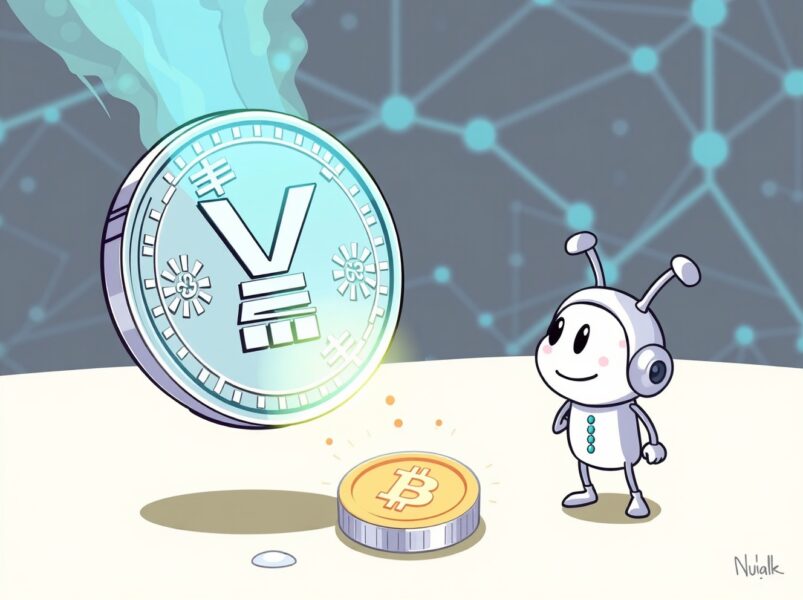FX’s Alien: Earth — Pictured: Timothy Olyphant as Kirsh.
Courtesy of Patrick Brown/FX
***The following contains certain spoilers for Alien: Earth!***
When it came time to marry picture and music for FX’s Alien: Earth, series creator Noah Hawley did what he’s done for close to 20 years: call up Jeff Russo.
“[He] said, ‘I’m adapting the Alien IP, for television. What do you think, musically?’” Russo recalls over Zoom. “We started talking and I began writing music for it. It seemed like…not a foregone conclusion, but a conversation that was being had.”
A founder of Tonic and a previous member of Low Stars, the composer has scored all of Hawley’s film and television projects since The Unusuals (2009). “Everything I’ve learned about making music for storytelling, I learned by doing with him,” Russo adds. “He really knows what he wants. And when you have a confident filmmaker that is also open to artistic collaboration, it’s the best of all the worlds.”
The first small screen translation of the nearly 50-year-old franchise known for straddling horror, sci-fi, and action genres, Alien: Earth takes place two years before the events of the 1979 original and nearly six decades before Aliens.
“We talk a lot about trying to figure out what the underlying property is making our audience feel,” Russo explains. “Trying to create a unique narrative and way of telling the story, but at the same time, making the audience feel that same feeling. In this case, there’s that feeling of dread. There’s that tense, eerie feeling created with such a deft hand in Alien. And then [came Aliens, which was] such a great action piece. So how are we going to take those two ideas and sort of mix them together, have that be something unique and different, while eliciting the same feeling?”
To that end, he utilized “some of the same methodology” and “some of the same little tropes” of his Alien forebears like “jump scares and a delay on the horn motif,” Russo notes. “Little things I could do to tip my hat to [Jerry] Goldsmith, tip my hat to [James] Horner. It’s fun for the fans and it’s fun for me as a musician to do that, too.”
LONDON, ENGLAND – JULY 29: Jeff Russo attends the “Alien: Earth” European Premiere at the Barbican Centre on July 29, 2025 in London, England. (Photo by Kate Green/Getty Images)
Getty Images
That was only the beginning, however. Unlike Goldsmith and Horner, Russo was not constrained by a two-hour runtime, but free to let his music breathe and evolve across multiple episodes. “As I was writing, I wrote the score as though I was writing an eight-hour movie,” he says. “There is this opportunity to develop the character relationships with music, with motifs, with thematic material.”
While too young to see Alien upon its initial release, a teenage Russo did get the opportunity to check out James Cameron’s rip-roaring sequel when it first hit theaters in the summer of 1986. “It had a profound effect on me,” he proclaims. “It was the very first time I’d ever seen a movie where I was actually on the edge of my seat. I actually felt my heart pounding in my chest … I had never had that happen before.”
He hoped to capture a similar tension, emotionality, and “propulsion” with his eclectic score for Alien: Earth, which makes use of everything from a bassdescophone to an Aztec death whistle. “Most important, is that it keeps you engaged without taking you out of [the story]. It’s really meant to make you feel. Not make you pay attention to the music, but make you feel the the vibe of what you’re looking at.”
As its title denotes, the series brings the chest-bursting Xenomorph carnage to our own front door, framing the story through the lens of a fierce corporate arms race between the infamous Weyland-Yutani and newly-introduced Prodigy.
The latter, founded by arrogant trillionaire wunderkind Boy Kavalier (Samuel Blenkin), kicks off the trouble by deliberately sabotaging a W-Y research vessel, the USS Maginot, returning from deep space with a number of highly aggressive alien species, including ol’ Xeno and a nasty little ocular gremlin called the Eye Midge.
“The idea isn’t to make sure each individual species has its own theme. Then you kind of have a Frankenstein score. It’s really more about the feeling,” stresses Russo. “The underlying Alien thematic motif, the underlying Alien feeling in the music, is really applied to all of the new species. The one thing we could never do is recreate the feeling [viewers] had the first time they saw a Xenomorph. The only way to have gone about doing that is to introduce new alien characters. And then, all of a sudden, when you see the Eye Midge jump into the sheep for the first time, it’s f—ing crazy weird and really unnerving.”
After getting a small tease in the pilot, fans got to see exactly what went down on the USS Maginot in Episode 5: “In Space, No One…”
Named for Alien’s uber-famous marketing tagline, “In space, no one can hear you scream,” the episode has been hailed for the way in which it captures the claustrophobic and retro-futuristic terror of the Ridley Scott film that started it all.
“When I saw those first scenes, my breath was taken away. I called Noah and was like, ‘F***! You did it!’ Oh my God, I couldn’t believe it,” Russo admits. “All of a sudden, I was like, ‘Okay, now I have to look at this particular episode through the lens of that first movie.’ I didn’t want to just do Goldsmith music, because that wasn’t going to help us. But definitely relying on the feelings that score created; trying to get the score that I was writing to do those same things was an even higher priority in this particular episode than the other episodes. I really wanted to make you feel like you were watching a movie that could have come right after Alien. Like it could have been released in ’81. Not from a sound perspective. I’m not saying I wanted to make a retro score, but I wanted that feeling to continue.”
When the Maginot “accidentally” crashes in his territory, Kavalier plunders its zoological treasures and brings them to a private island for research and development. Incensed at being outsmarted, the CEO of Weyland-Yutani (Sandra Yi Sencindive) allows one of her employees, a cyborg with very few scruples named Morrow (Babou Ceesay), to use any means necessary to reacquire the biological specimens. For Russo, the series can be summed up by Ripley’s iconic line from Aliens: “I don’t know which species is worse. You don’t see them f—ing each other over for a goddamn percentage.”
Translation: the bloodlust of an unstoppable monster from beyond the stars still pales in comparison to the fathomless depths of human greed and cruelty.
“A lot of what we talk about is, ‘Who’s the bad guy? Who’s the villain in the story?’” says the composer. “‘Is it the alien? Is it the corporations? Is it the smart humans making dumb choices? What’s the underlying villainous feeling, and where does it come from?’”
FX’s Alien: Earth — “The Fly” — Season 1, Episode 6 (Airs Tues, Sept 9) — Pictured (L-R): Samuel Blenkin as Boy Kavalier, Ade Edmondson as Atom Eins, Timothy Olyphant as Kirsh. CR: Patrick Brown/FX
Copyright 2025, FX. All Rights Reserved.
And, of course, an Alien project just wouldn’t be an Alien project without a Synthetic or two. Hawley’s vision of the future includes the classic rendition — à la Ash, Bishop, and David — while taking the concept even further. You see, Kavalier and his scientists have found a way to transfer human consciousness into android bodies, thus setting the stage for something our species has dreamed of for centuries: immortality. The only drawback? Adult brains are ill-equipped for the swap, meaning Prodigy must rely on children with terminal diseases to be their guinea pigs.
While developing minds are better adapted for the procedure, it soon becomes clear that an emotionally immature consciousness controlling a super-powered body may not always lead to the best results. In addition to serving as an allegory for how many wield the power of AI with childlike irresponsibility, the hybrid Synthetic thread also represents the beating heart of the entire show. The de factor leader of Kavalier’s band of “Lost Boys,” Wendy (Sydney Chandler), raises important questions regarding humanity, science run amok, and the monsters we make of ourselves.
It was all a veritable treasure trove for Russo. “The relationship of all the Lost Boys to Boy Kavalier; the relationship of Wendy to the Xenomorph; the Eye Midge’s relationship to its host,” he says. “It’s an interesting thing to think about designing music that is meant to connect all these different characters.”
With just one episode left to go, I ask the composer what fans can expect from the season finale. He replies with a three-word answer: “Expect the unexpected.”
Episodes 1-7 of Alien Earth are currently streaming on Hulu
Source: https://www.forbes.com/sites/joshweiss/2025/09/17/alien-earth-composer-jeff-russo-dives-into-music-for-noah-hawley-series-i-wrote-the-score-as-though-i-was-writing-an-eight-hour-movie/



